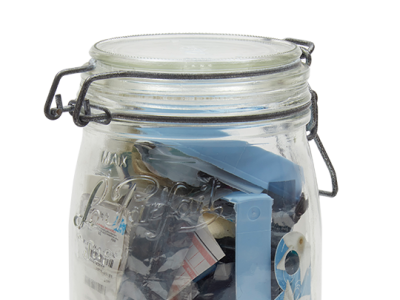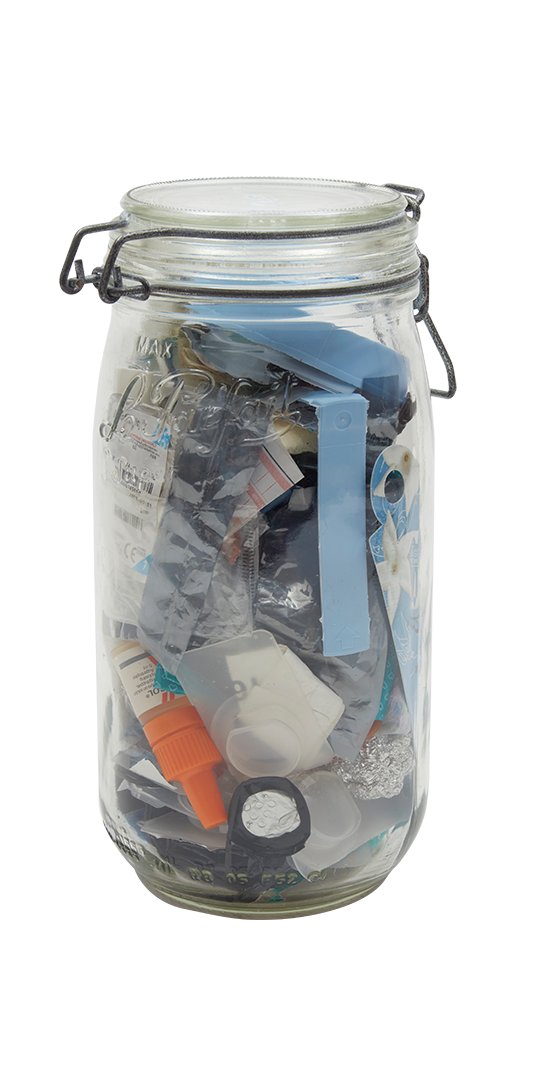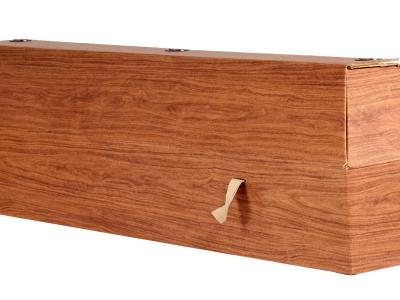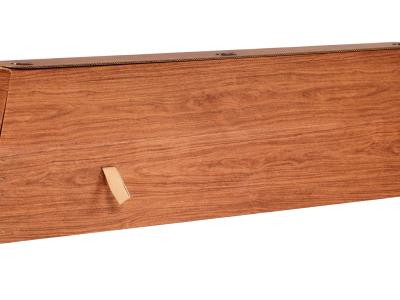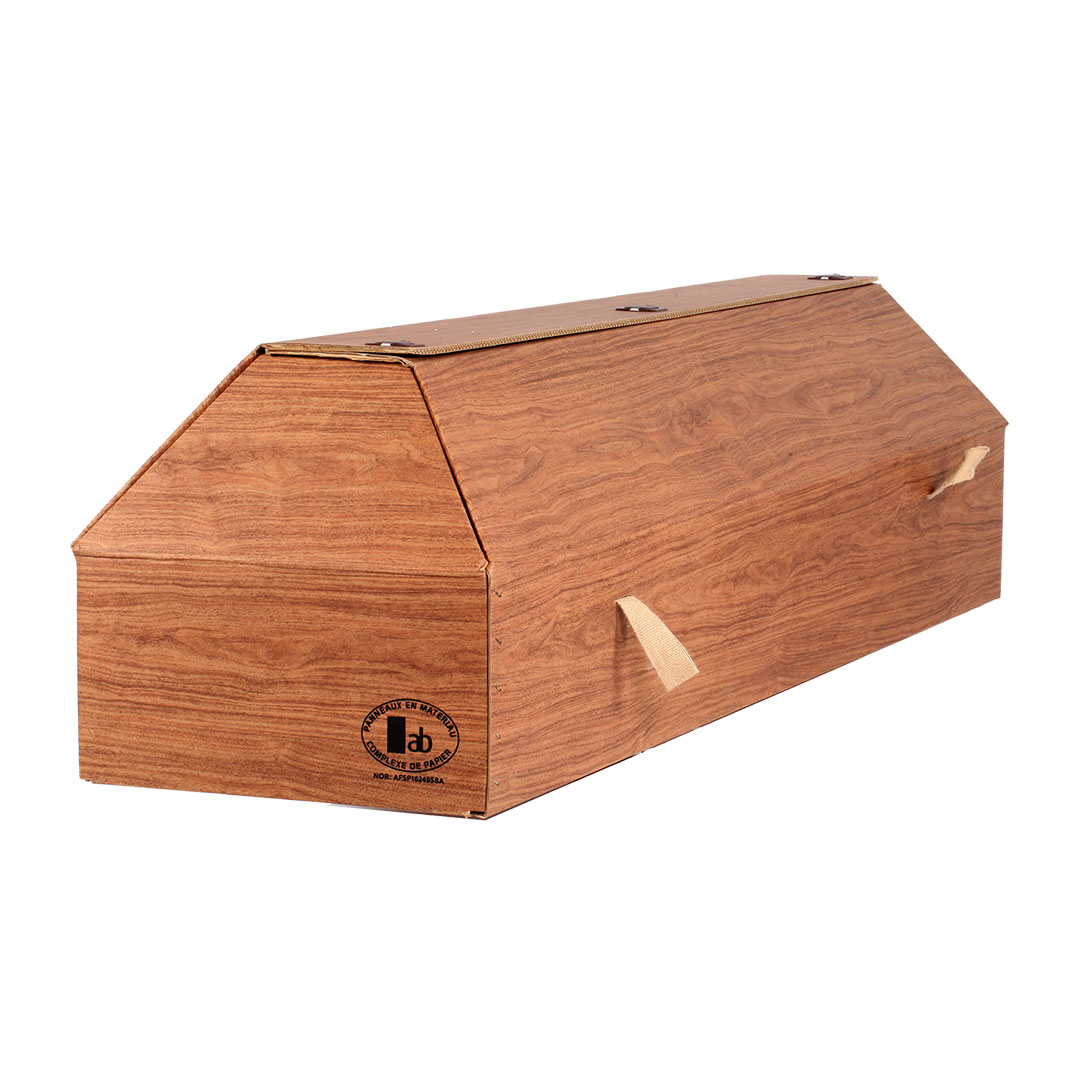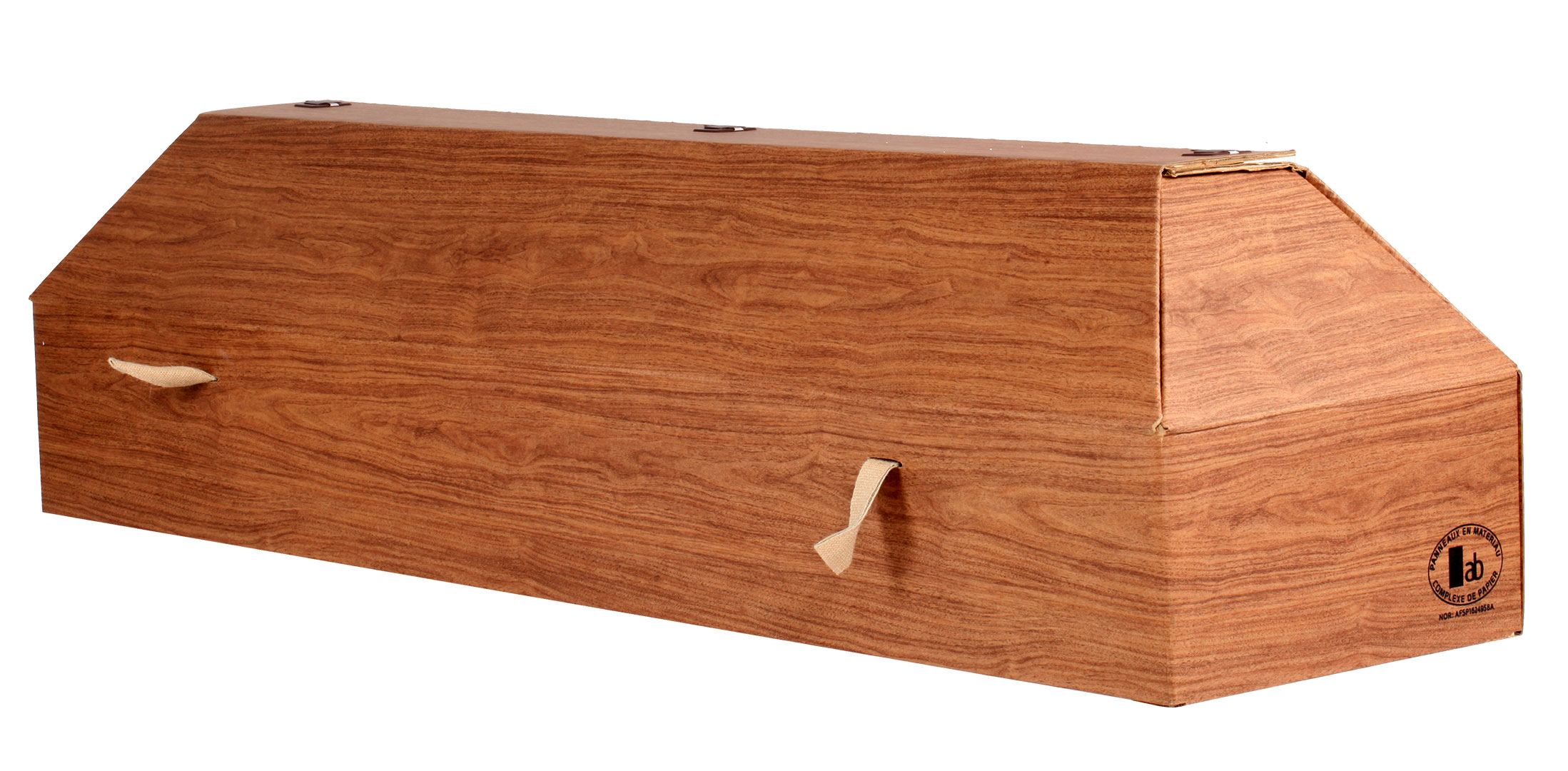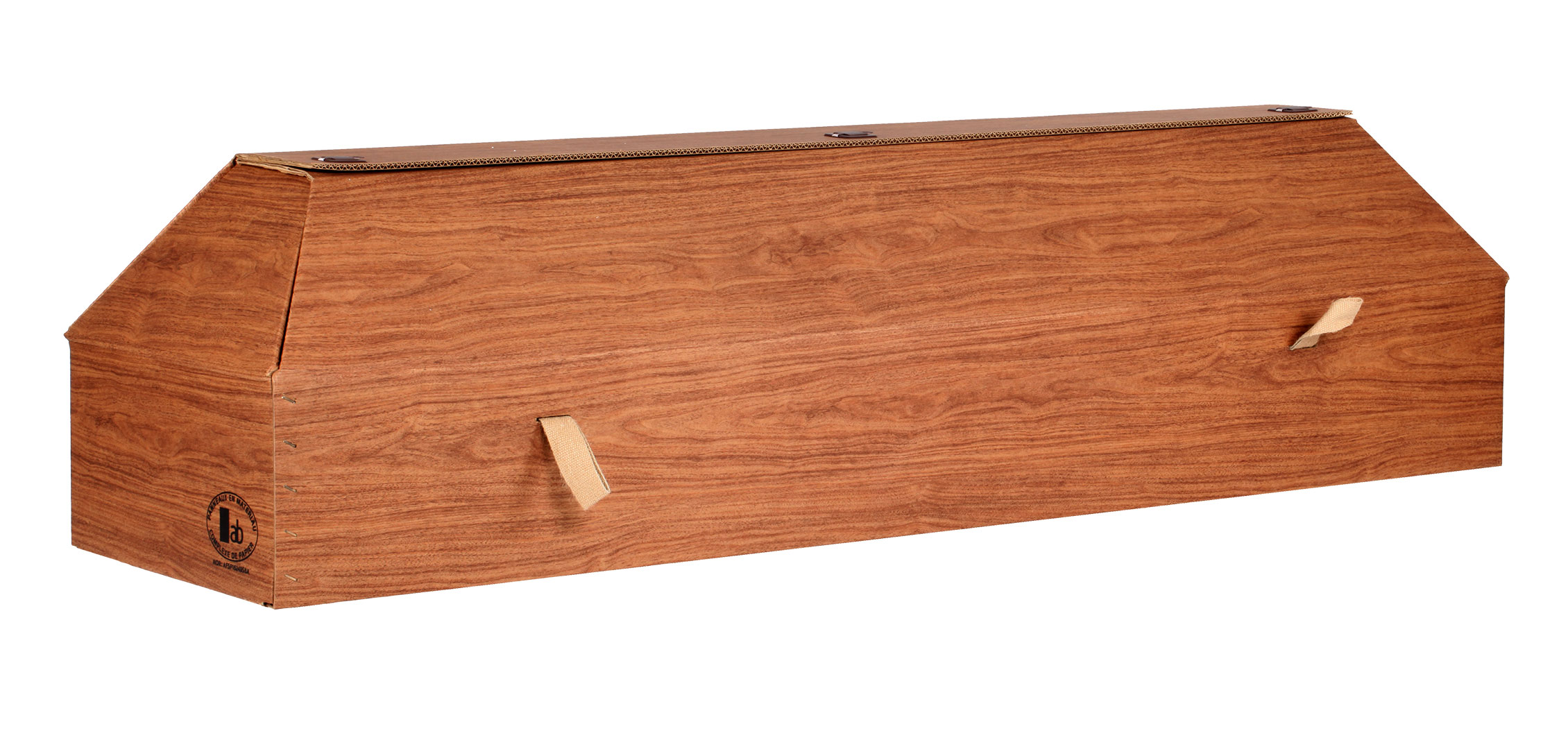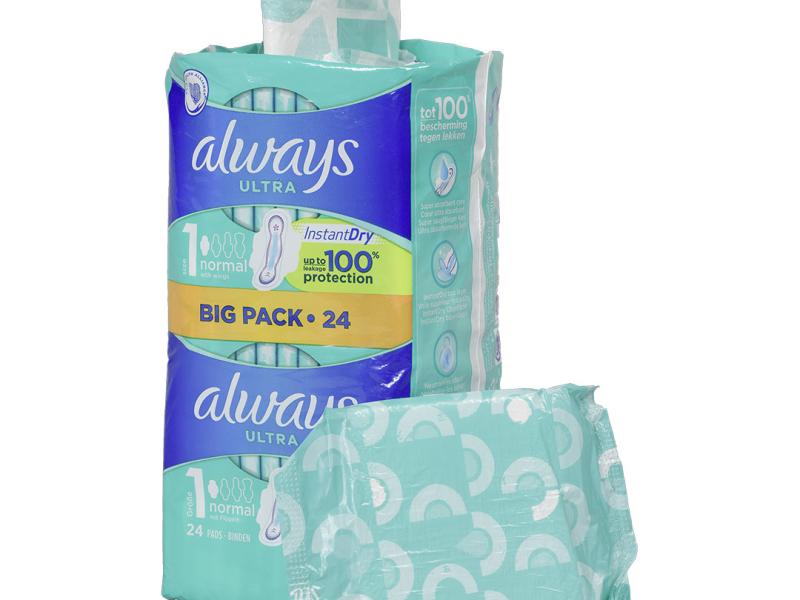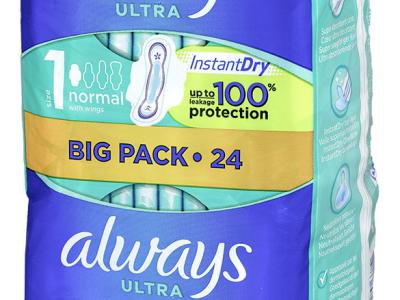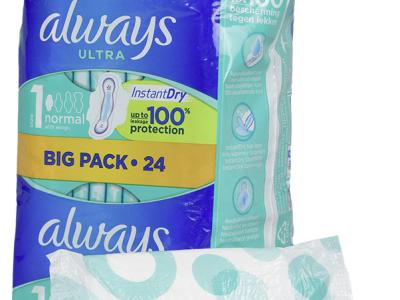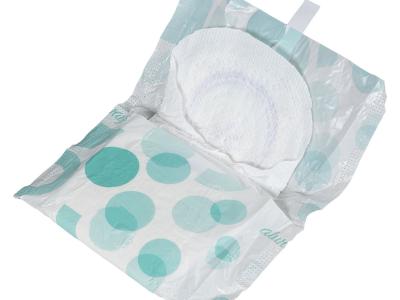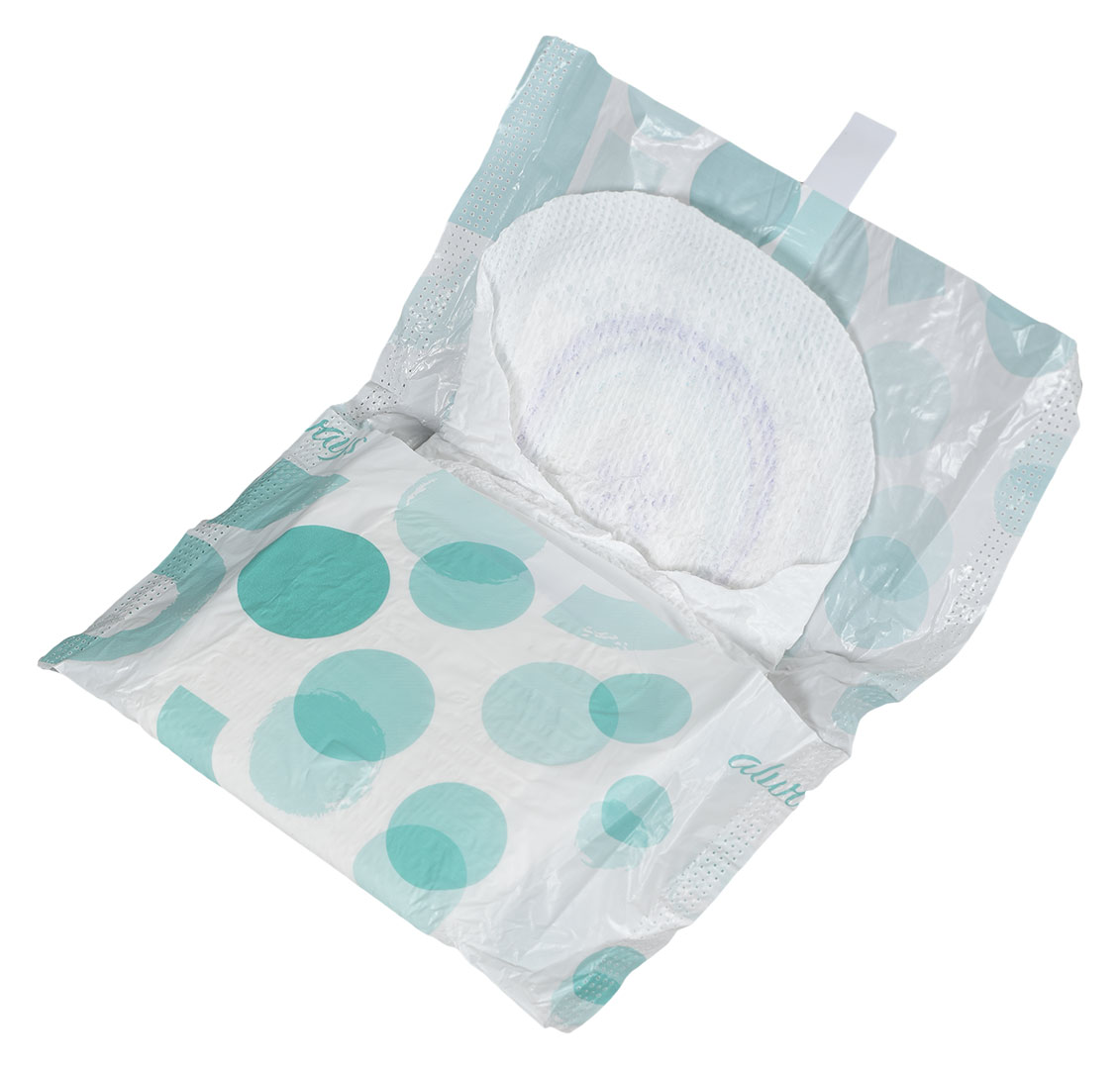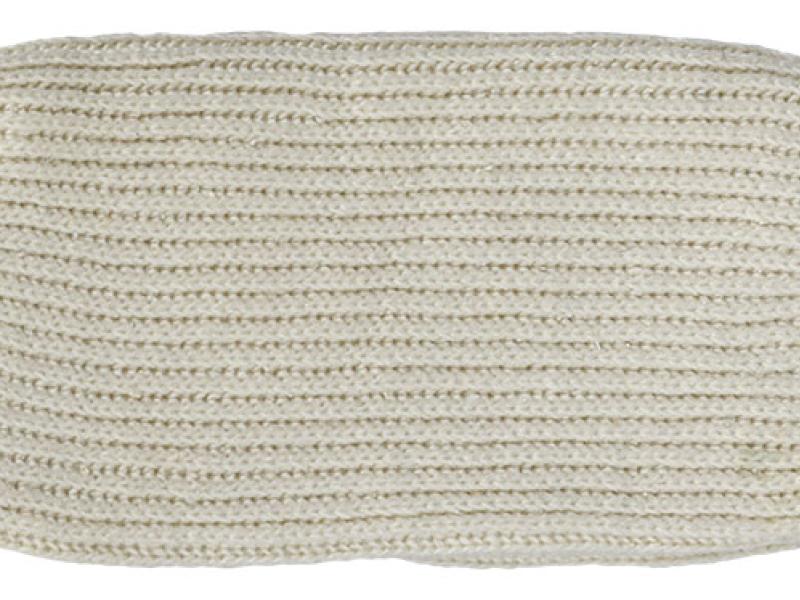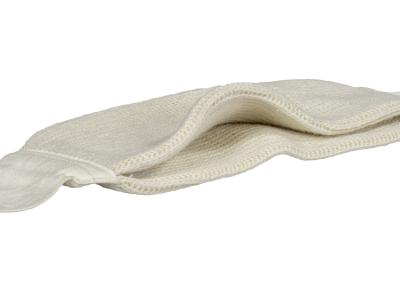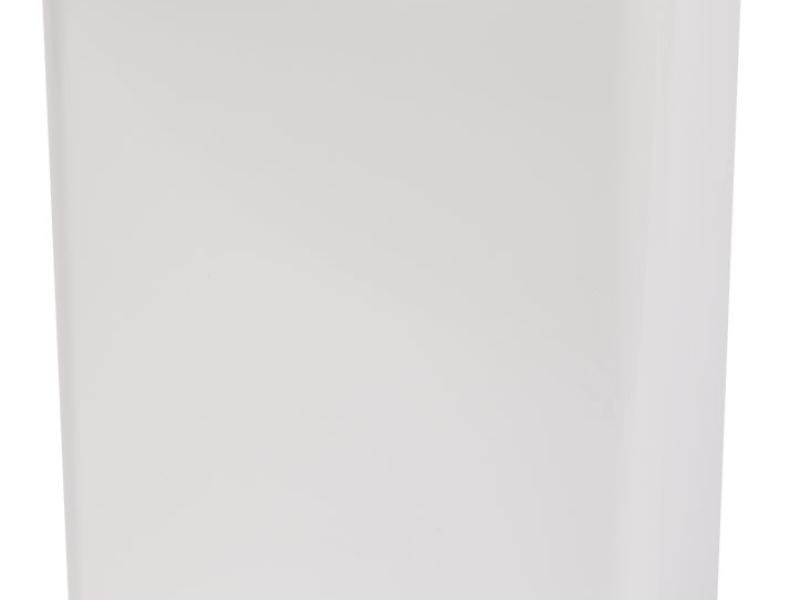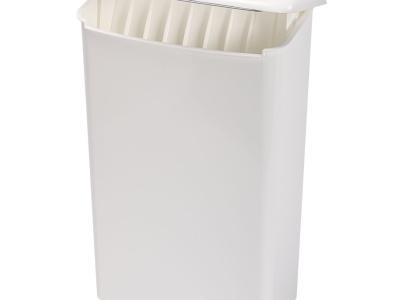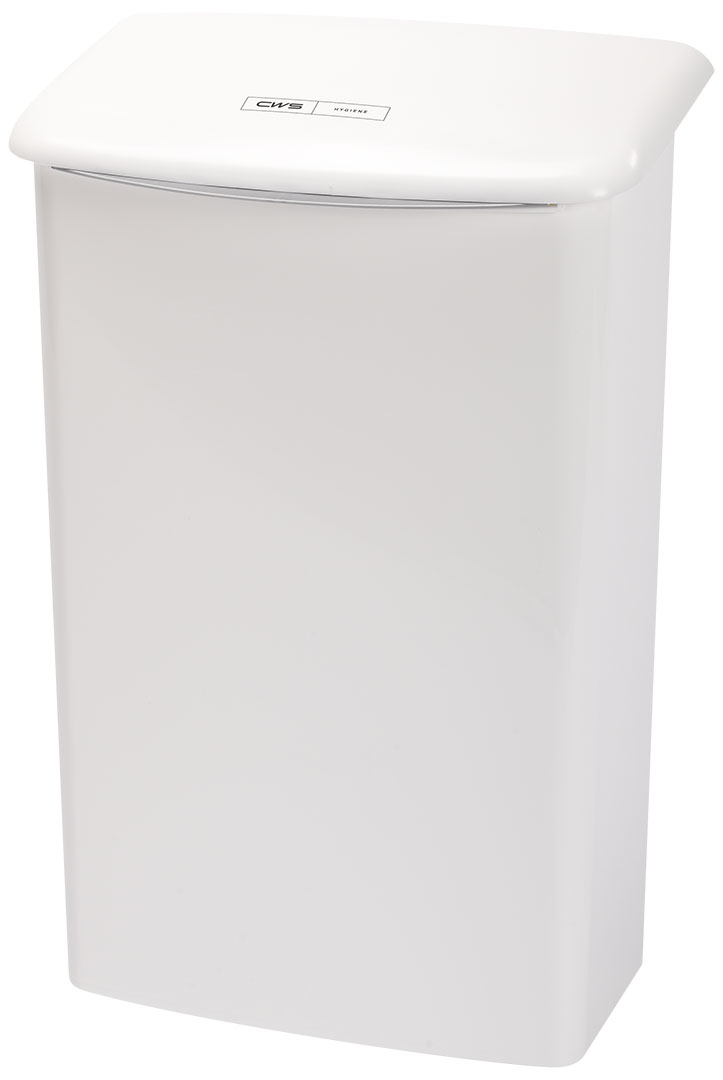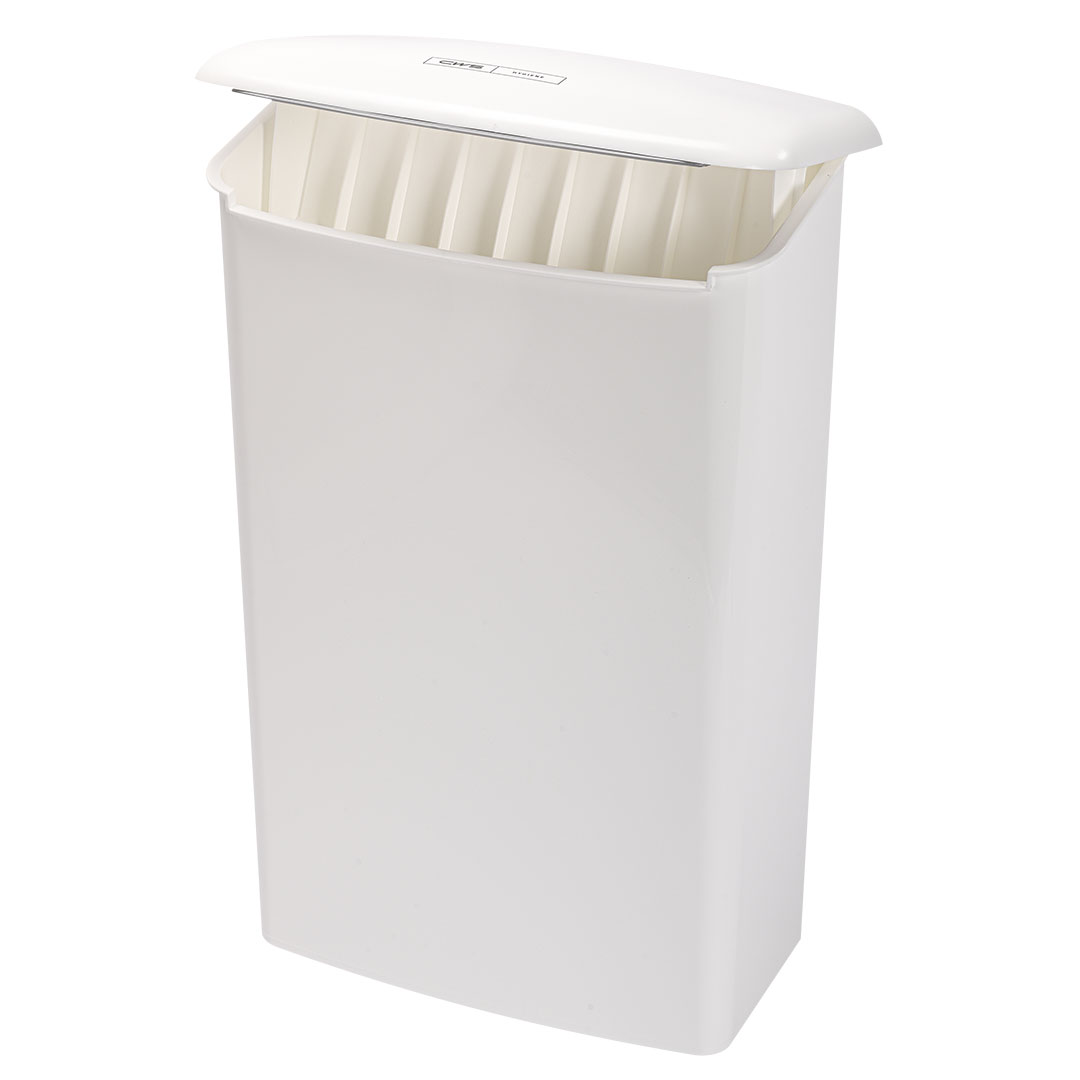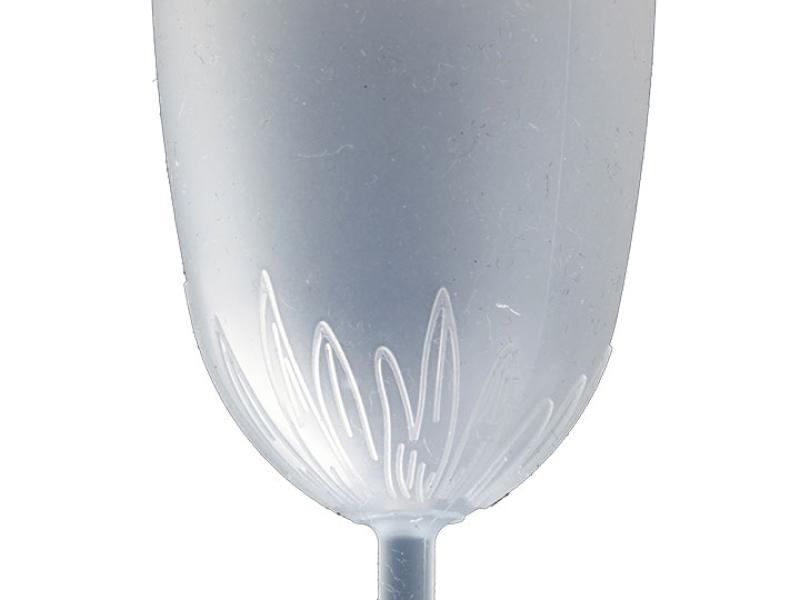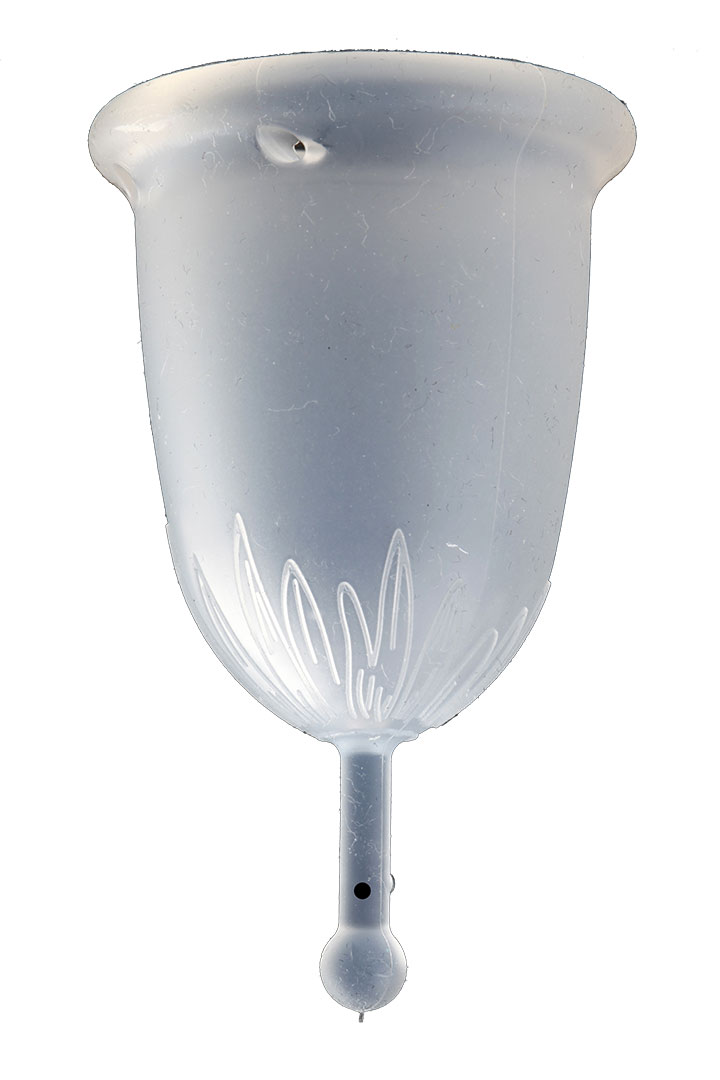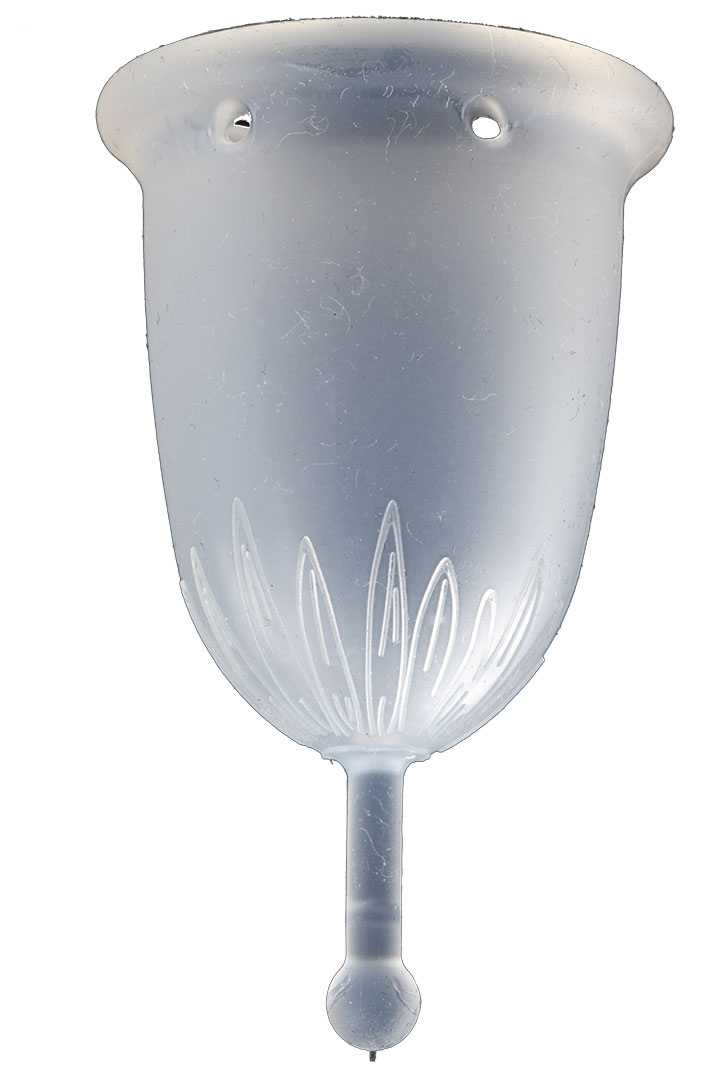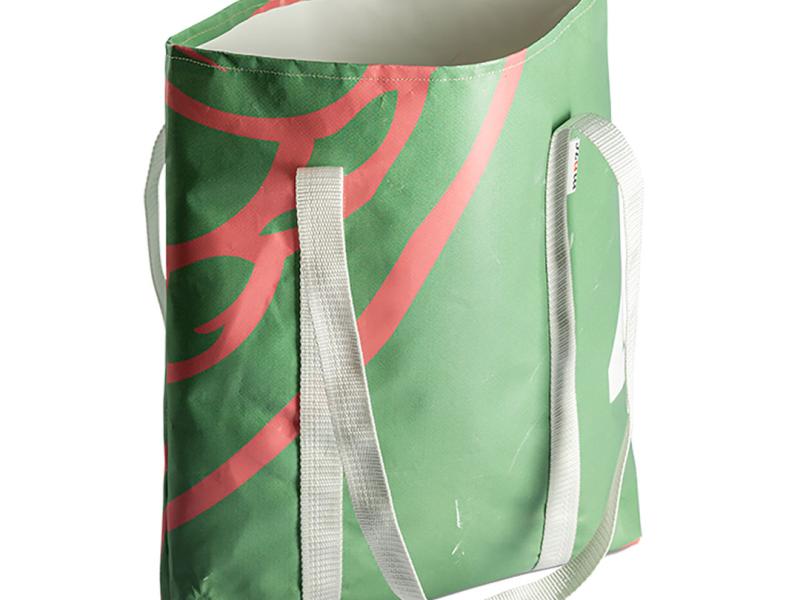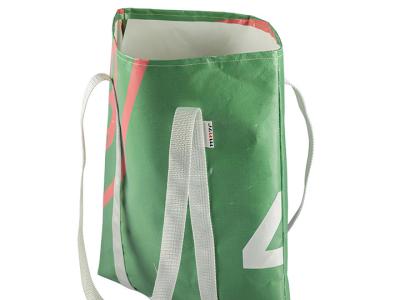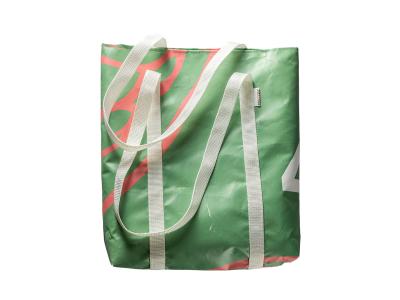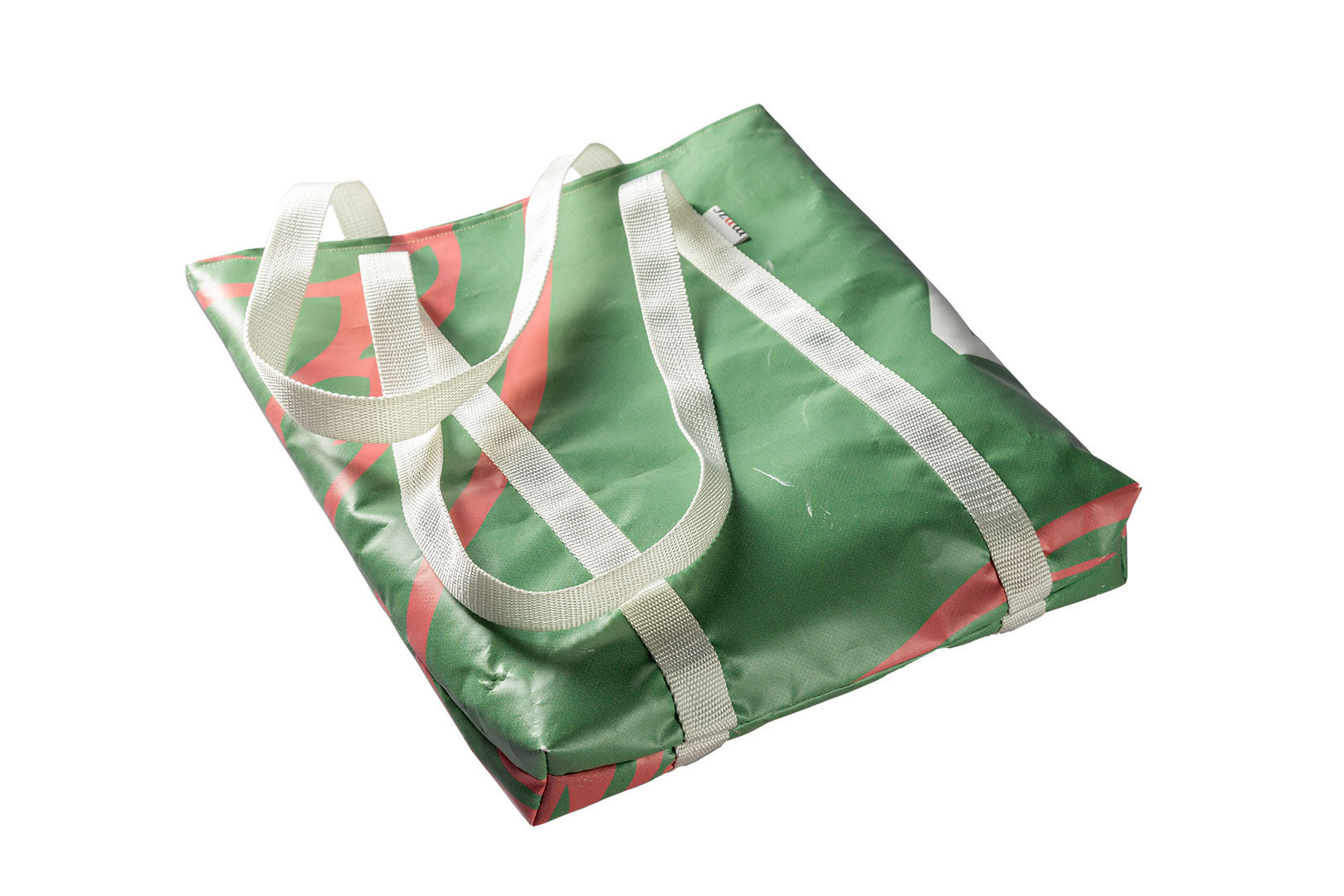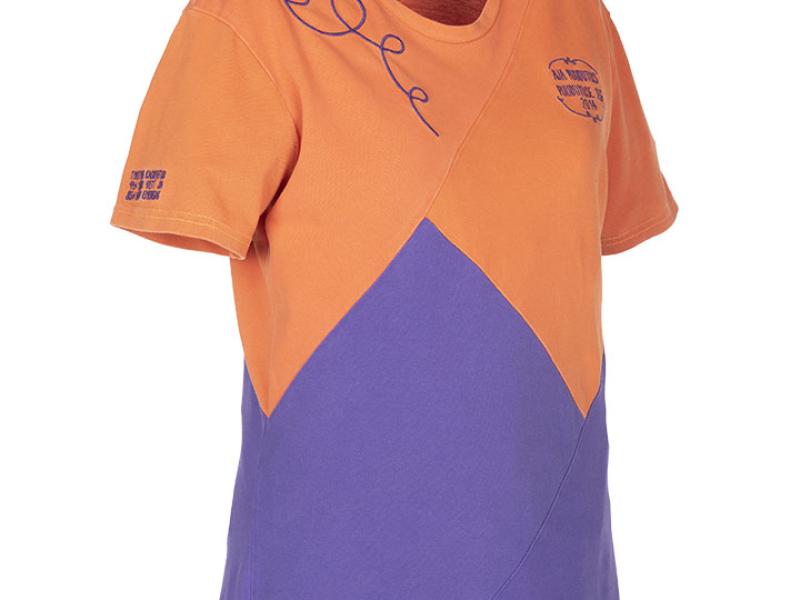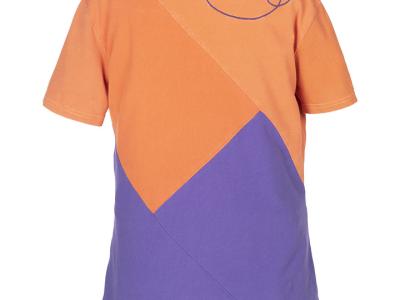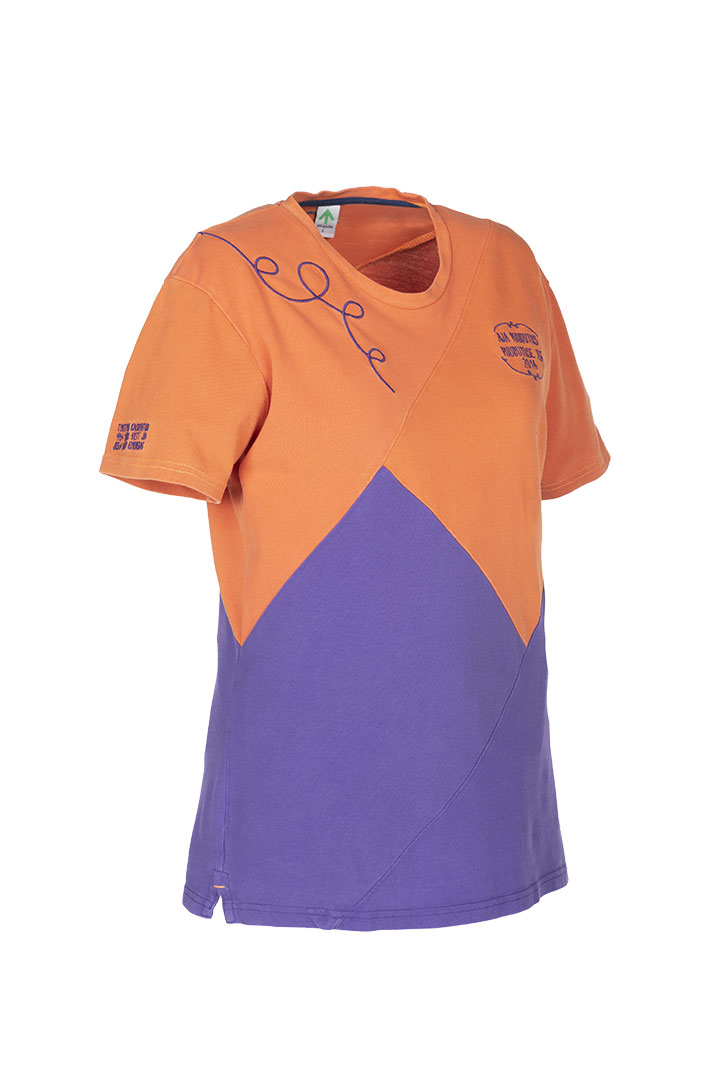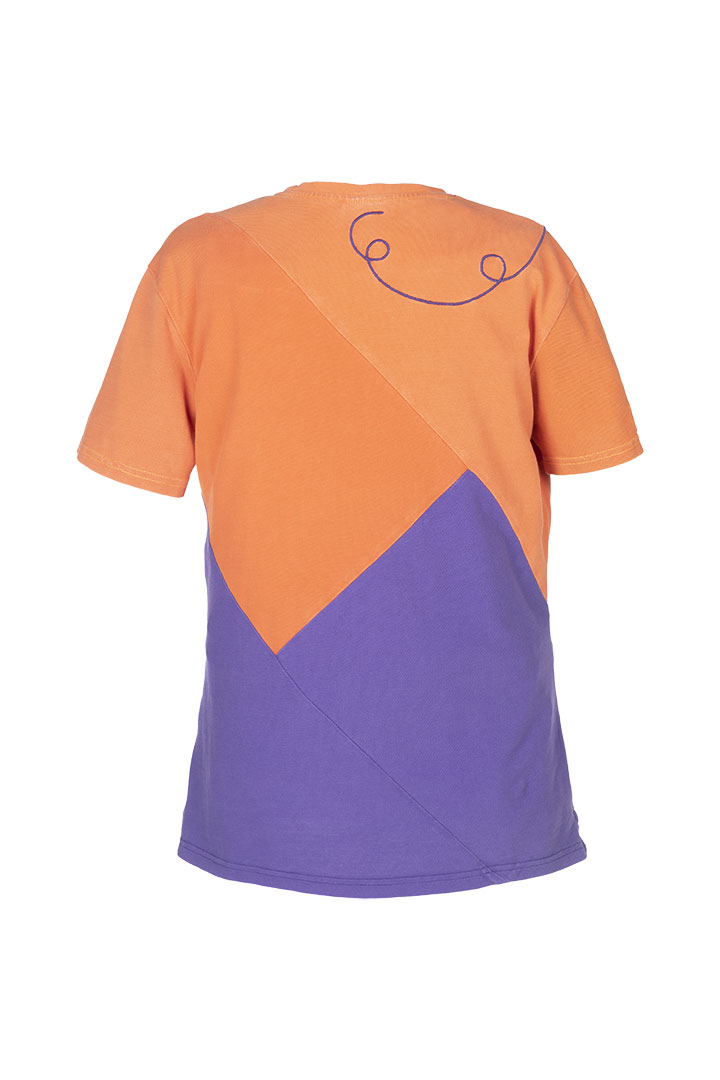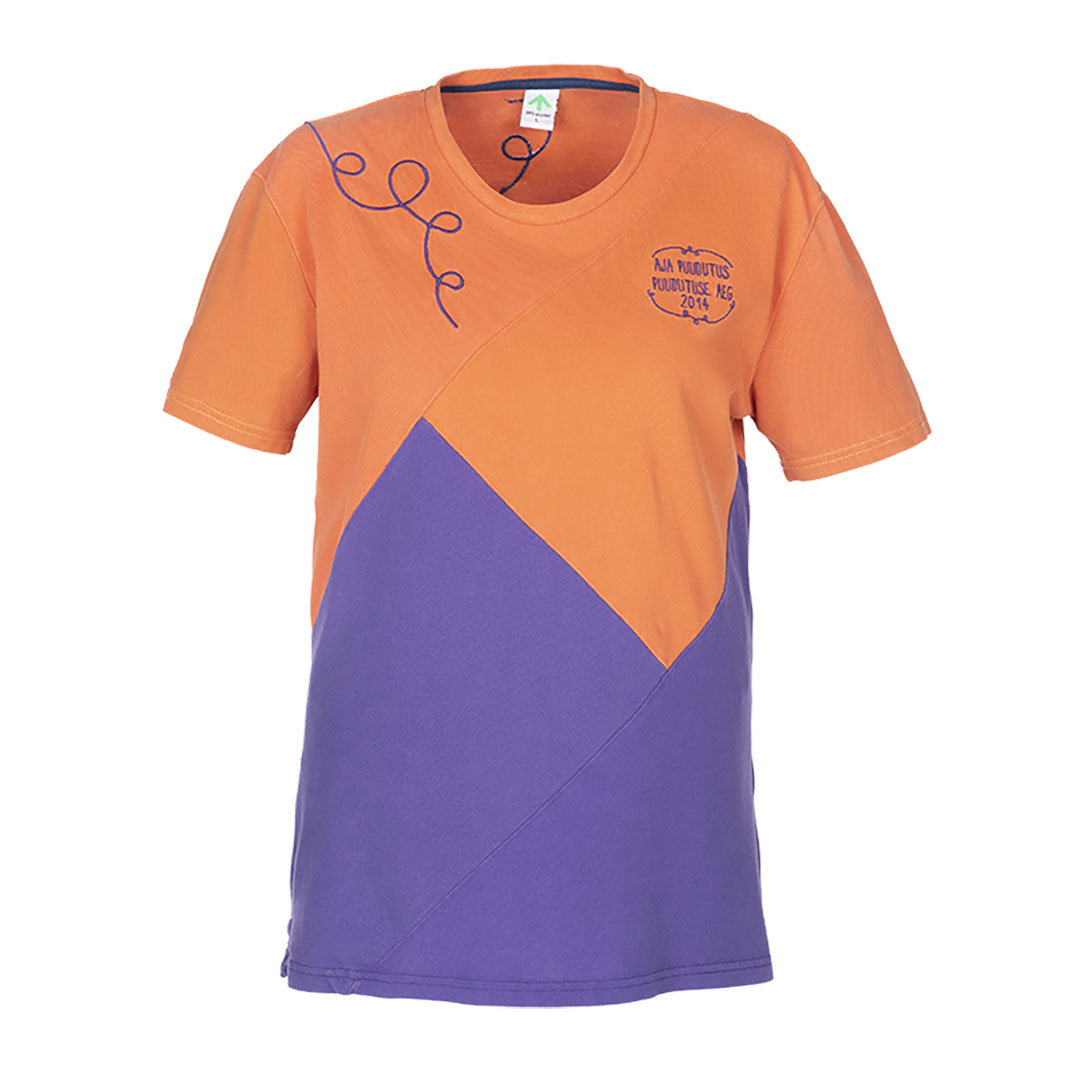One year’s rubbish in a jar
- Artist / Maker
- Marc Sautelet
- Date production / Creation
- 2016
- Entry in the museum collection
- 2022
- Place of origin
- Brussels, Belgium, Europe
- Current location
- House of European History, Bruxelles, Belgique
All great change starts somewhere. Where do individuals fit in the struggle to turn the tide on waste?
Marc has embraced the zero-waste movement and practises the "5 Rs" – refuse, reduce, reuse, recycle and rot (composting). In 2016, he successfully completed the "jar challenge": reducing his waste production during a full year so that it did not exceed a 1.5 litre jar. Others who experimented with zero-waste living criticised how this "jar tyranny" induced feelings of guilt by focusing on individual as opposed to systemic change. However, Marc saw it as a "challenge".
What does this jar contain and what does it seem to say about the person behind it? According to Marc, "One must think that [it belonged] to someone who likes to party, because the jar contains some wine bottle lids and festival bracelets. (Someone) who also has eye problems – because there’s contact lens stuff – and who is clumsy – because he broke a smartphone!)
Movements demanding the drastic reduction of individual and industrial waste have been growing worldwide over the past 25 years, advocating that "the best waste is the waste that does not exist". Some individuals try to reduce the amount of rubbish their household produces to the bare minimum. Some who have embraced the cause have become very influential in their countries and abroad – like Béa Johnson in the United States, Sylvie Droulans in Belgium and Jérémie Pichon in France, just to name a few.
The owner of this jar, Marc, also used his own "one year’s worth of waste in a jar" as a pedagogical tool, when facilitating workshops on behalf of Zero Waste Belgium – a non-governmental organisation for which he worked from 2018 to 2022.
This object originates from a local participatory process conducted during the preparation of Throwaway, in which local waste experts were involved in creating the exhibition’s content. These communities of experts contributed to the exhibition through their testimonies and by lending objects (such as this one) to be put on display. Zero Waste Belgium was one of the partners involved and put the House of European History in contact with Marc and other individuals.
During his "jar" challenge, Marc avoided generating garbage as much as possible, including by making homemade toothpaste, using reusable containers for take-away food and not purchasing a single package of crisps! Then he put all of his unavoidable rubbish in a jar. "Waste (...) is a vestige of our lives", says Marc, who considers his jar to be simultaneously "a track of one year, of things [he] couldn’t avoid, but also of the events (he) lived through". Nowadays he allows himself some things he did not in 2016 – he even occasionally indulges in crisps without guilt – but some good habits, like composting, he will never "throw away"!
Material
Container: Glass and metal. Contents: Different types of non-recyclable materials (mainly small pieces of plastics)
Dimension
Height × diameter: 22.5 × 10 cm; Volume: 1.5 litres
Inventory number
2021.0050.154
Copyright
House of European History, Brussels, Belgium
Status
On display in temporary exhibition Throwaway. The History of a Modern Crisis
Image credit
Photo 2022 by Regular Studio, © EU, European Parliament
Environmentally friendly coffin
- Artist / Maker
- abCrémation / Product and business.
- Date production / Creation
- 2021
- Entry in the museum collection
- 2021
- Place of origin
- France, Europe
- Current location
- Museum of Walloon Life - Province of Liège, Belgium
From lead-lined coffins to gas-fired crematoriums, even death has a material footprint.
A growing number of people are choosing a more environmentally friendly alternative for their final resting place. Funeral directors now offer coffins and urns made from recycled and biodegradable materials. Manufactured in natural wood with no added pollutants, or in willow or even cardboard, these coffins have the advantage of being less expensive and more "green".
Only burial, which may cause soil pollution, and cremation, for which a lot of fossil fuel is required, are currently permitted in Wallonia. However, other alternatives are being developed around the world. These include human composting – where the body is transformed into humus to decompose in a natural setting – or water cremation, based on the same principle but using alkaline water. These futuristic and more environmentally friendly methods are already permitted in some countries and could, one day, be part of funeral practices in Europe.
The Museum of Walloon Life is putting on an exhibition on rubbish in 2022-2023 entitled “Ordures - L'expo qui fait le tri” (Rubbish – an exhibition that sorts it). The concept of zero waste has an important place in this exhibition. A vast number of objects linked to zero waste have been collected since 2021 to complete the museum’s collections.
Reducing waste is important at all stages of our lives, right up to our death. Alternatives, such as this biodegradable coffin, form part of the zero waste movement.
Material
Cardboard, jute and cotton
Dimension
52 x 50.3 x 191.5 cm
Inventory number
5060937
Copyright
Province of Liège – Museum of Walloon Life
Status
In storage
Image credit
Province of Liège – Museum of Walloon Life
Always ultra sanitary pads
- Artist / Maker
- Procter & Gamble
- Date production / Creation
- 2020
- Entry in the museum collection
- 2020
- Place of origin
- Berlin, Germany, Europe
- Current location
- Museum of European Cultures, Berlin, Germany
Always: it’s more than a name. Modern disposable sanitary pads linger longer in the landscape.
This pack of sanitary pads – produced by Procter & Gamble under the brand name "always" – contains 24 individually wrapped "ultra pads" with wings. Both the outer packaging and the individual wrappers are made from thin, turquoise plastic film. The pads themselves consist of multiple layers of synthetic material and are white with a lilac and pale blue pattern printed on them. The "always" brand first brought classical disposable pads to the market in the early 1980s. Shortly thereafter, it introduced pads with "wings" designed to hold the pad firmly in place and ensure better protection of underwear. In 1991, Procter & Gamble launched its "ultra pads", in which several centimetres of thick wadding or fleece were replaced with an absorbent core, making for very thin pads.
Procter & Gamble was founded in the United States by an English and an Irish migrant. Today, it is a multinational company that sells its products worldwide. Its "always" pads are available in many European countries, including Germany, Spain and Turkey.
To prepare for this exhibition on menstruation, 2020 modern-day sanitary products were added to the collection.
In 2017, more than 49 billion single-use sanitary products were used across the 28 EU Member States. Materials such as wood pulp, cotton, viscose fibres and plastic go into their production. Once used, these items – weighing 590 000 tonnes – ended up in landfill or the incinerator.
Current location
Museum of European Cultures, Berlin, Germany
Material
Cellulose, synthetic material, printed, bonded
Dimension
Height × width × depth: 18 x 8.5 x 8.5 cm (outer packaging), Height × width × depth: 8.5 x 12 x 0.5 cm (individual wrappers), Height × width × depth: 23 x 15 x 0.2 cm (pad)
Inventory number
N (9 D) 85/2020
Status
In storage
Image credit
Staatliche Museen zu Berlin, Museum of European Cultures / Christian Krug Public Domain Mark 1.0
Washable menstrual pad
- Artist / Maker
- Unknown
- Date production / Creation
- 1930s
- Entry in the museum collection
- 1991
- Place of origin
- Leipzig, Germany, Europe
- Current location
- Museum of European Cultures, Berlin, Germany
The bleeding edge of menstrual hygiene technology.
Washable fabric pads such as this one became popular in Germany in the early 20th century. They were worn by attaching them to a sanitary belt. In the 1930s, German catalogues recommended machine-knitted pads "to all women for health reasons". Even into the 1950s, they were still offering the pads for 60 pfennig a piece.
Similar knitted pads were used in other European countries.
The pads were acquired in 1991 from a woman from Leipzig.
Knitted pads were sold in Germany from the end of the 19th century. Since they could be washed and boiled, they could be used again and again, meaning there was no waste, as there was with the disposable pads that came on the scene in the 1920s.
Current location
Museum of European Cultures, Berlin, Germany
Material
Cotton, linen, machine-knitted, machine-sewn
Dimension
34 cm x 10 cm x 0.5 cm
Inventory number
I (23 G) 542/1991
Status
In storage
Image credit
Staatliche Museen zu Berlin, Museum of European Cultures / Christian Krug Public Domain Mark 1.0
Sanitary Bin
- Artist / Maker
- CWS International GmbH
- Date production / Creation
- 2022
- Entry in the museum collection
- 2022
- Place of origin
- Switzerland, Europe
- Current location
- Museum of European Cultures, Berlin, Germany
Discreet and safe disposal of used menstrual products: but is this waste harmful?
The rise of disposable menstrual products from the 1950s onward created not only a new form of waste, but also a new pollution problem. For pads or tampons were all too often discarded in toilets and caused an environmental problem of water pollution hitherto virtually unknown in its dimension. This prompted the introduction of waste garbage cans in "ladies' toilets". Companies such as Canon Hygiene (now Citronhygiene), PHS or Rentokil Initial launched waste garbage cans on the market whose design was specially tailored to public "ladies' toilets": On the one hand, they were supposed to fit in the narrow cubicles still next to the toilet. On the other hand, a flap in the lid was to hide the contents of the bin from view and touch. The model that the MEK has added to its collection has been produced since 1995 by CWS, a company founded in Germany. It is now very common in public places in Germany, at schools, universities or airports.
CWS offers the hygiene waste garbage cans throughout Europe. The waste garbage cans are rented by the customers. The CWS service includes regular cleaning and disinfection of the bins. The washing facilities for cleaning the bins can also be found throughout Europe.
In preparation for an exhibition on menstruation, the curators of the Museum of European Cultures (MEK) came across the research of Camilla Røstvik. She is researching the history of sanitary waste garbage cans - everyday objects that are widely used and very familiar to menstruators in their daily lives. As a museum of everyday culture, the MEK is particularly interested in such supposedly banal objects whose history is little known or whose uses are rarely questioned. For the exhibition, the curators therefore requested an exhibit from various manufacturers of sanitary waste garbage cans and received, among others, this brand-new specimen.
Hygiene waste garbage cans with privacy lids have so far been found almost exclusively in "ladies' toilets". They are specially designed for the disposal of menstrual waste. This indicates that the waste is special - it is "female waste". This is also considered potentially toxic. To be sure, the thesis of "menotoxin," or toxic menstrual blood, has long been disproved. However, with the advent of HIV, the fear of infection via blood was renewed. Research on whether used menstrual products pose any kind of infectious risk is largely lacking. In their design, menstrual waste garbage cans are intended to render "feminine waste" harmless: Many models can be opened without having to touch them with your hands. The flap in the lid prevents the trash already contained from being seen or touched.
Material
Plastic
Dimension
52,5 × 34,5 × 20,0 cm
Inventory number
N (9 D) 63/2022
Status
In storage
Image credit
Staatliche Museen zu Berlin, Museum Europäischer Kulturen / Christian Krug Public Domain Mark 1.0
Menstrual cup
- Artist / Maker
- Fleurcup
- Date production / Creation
- 2021
- Entry in the museum collection
- 2021
- Place of origin
- Liège, Belgium, Europe
- Current location
- Museum of Walloon Life - Province of Liège, Belgium
Is a "greener" period possible? Menstrual cups like these were designed to cut down on waste.
The Fleurcup is a washable and reusable menstrual cup that offers women a more environmentally friendly alternative for their feminine hygiene needs.
A growing number of shops in Europe are joining the zero waste movement by proposing washable and reusable products, particularly for feminine hygiene. This comes in response to an increasingly strong demand from the public in Europe for ways in which individuals can play their part in addressing environmental issues.
The Museum of Walloon Life is putting on an exhibition on rubbish in 2022-2023 entitled “Ordures - L'expo qui fait le tri” (Rubbish – an exhibition that sorts it). The concept of zero waste has an important place in this exhibition. A vast number of objects linked to zero waste have been collected since 2021 to complete the museum’s collections.
Disposable tampons and sanitary towels cause environmental and health problems. The washable menstrual cup is an alternative that cuts down on domestic waste.
Material
Silicone
Dimension
7 x 4.5 cm
Inventory number
5061345
Copyright
Province of Liège – Museum of Walloon Life
Status
In storage
Image credit
Province of Liège- Museum of Walloon Life
A sign of better days to come?
A large shoulder bag intended for everyday use and for shopping. It is made from old advertising banners for museum exhibitions. For many years the Museum of Recent History Celje has advertised its exhibitions on big banners hung on the front of the building. Banners advertising temporary exhibitions have served their purpose after a few months but the tarpaulin from which they are made is still in good condition. Each bag is cut from a printed tarpaulin and hand-stitched, and is therefore one of a kind. The collection of bags sewn from advertising banners is on sale in the museum shop.
The material from which the bags are made was produced abroad and printed in Slovenia. The bags are designed and stitched in Slovenia. They are sold at the museum shop in the Museum of Recent History Celje. Consequently, visitors who buy the bags will be carrying former museum advertising banners to towns and cities across Slovenia, Europe and the rest of the world.
The bags are made to order from old museum banners, making use of the tarpaulin sheets on which we advertise museum exhibitions. One of the bags is in the museum’s Urbano collection, which contains various items connected with urban living and popular culture. The bag is part of the museum collection because it reflects the trend towards recycling, reuse and local production.
The bags are made from old tarpaulin banners advertising museum exhibitions. The tarpaulin used to advertise temporary exhibitions has served its purpose after a few months. The banners are large format so they take up a lot of space in storage, but it would be a shame to throw them away because they are made from a high-quality, multi-use material. It is very easy to cut and stitch and performs excellently in everyday use. So instead of being discarded the tarpaulin is turned into shoulder bags that are sold at the shop in the Museum of Recent History Celje.
Material
Tarpaulin, tape / print, cutting, stitching
Dimension
740x380x60 mm
Inventory number
745:CEL;U-683
Copyright
Celje Museum of Recent History
Status
In storage
Image credit
Matic Javornik
T-Shirt
- Artist / Maker
- Estonian fashion designer, Reet Aus, PhD
- Date production / Creation
- 2009
- Entry in the museum collection
- 2023
- Place of origin
- Private collection
- Current location
- Estonian national museum, Tartu, Estonia
Recycled T-shirt created for Estonian’s 2009 Song Festival.
The most wearable garment in everyday life is the T-shirt, which can carry a message, be a trendy branded shirt or a well-worn but precious item to its wearer due to its story. Upcycling requires several informed partners – somebody with the idea and, nowadays, also a conscious fashion buyer. In 2009 a T-shirt designer took on a challenge to create a T-shirt for the participants in Estonia’s biggest festival – song and dance festival – completely out of textile waste. It was certainly an exemplary eco-sustainable design action in the Baltic countries/Europe, in which more than 20 000 people took part over a short period of time (summer).
Story about how to avoid waste, save clean water by using a different manufacturing process and how to apply ‘keep it & use it’ instead of "throwaway" in the context of textile waste from mass production.
‘Do we know that on average it takes about 310 grams of fabric to produce one garment? Since all of the 23 000 shirts for the 2009 song and dance festival were made from overproduction waste resulting from mass production, we prevented the need to manufacture approximately 7 130 kg of new fabric. As a result we saved 82 570 litres (82 570 m3) of water and 80 040 kWh of energy in total, and prevented 41 989 kg of CO emissions. Estonians can proudly say thank you to all the festival participants, who made a real contribution to changing the global industry and to providing useful base knowledge for developing the European Commission’s new textile strategy.
Places: song and dance festivals, summer events. Reet Aus, PhD (2022) is an internationally renowned professor of Liberal Arts at the University of Tartu, Senior Research Fellow at the Estonian Academy of Arts, participates in international research projects, helped to develop the European Commission’s new textile strategy 2035 and is a researcher in the Sustainable Design and Material Lab DiMa at the Estonian Academy of Arts.
The student exhibition organised in the DIY Gallery by the Museum brought together upper secondary students, professionals, scientists and practitioners. Journeys in Time guides a visitor through the Estonian National Museum’s permanent exhibition Encounters, which also covers the topics of Innovation, People and the Environment. In collaboration with the Estonian Song and Dance Celebration Foundation. A modern museum collects stories and objects that reflect the global topics of society – environmentally sustainable views and materials.
At the joint exhibition we analysed with students how cotton from the field turns into landfill, through manufacturing-retail distribution-home consumption and market surplus, and what opportunities the circular economy offers.
Mass production waste gives increasingly more reason to innovate, to calculate the actual quantities of cotton fibre surplus and find ways to use it before the material becomes unusable rubbish. Plus global questions, how to actively kick-start the circular economy, how to take the knowledge about desirable consumption habits and daily recycling (waste sorting) to the level of citizens.
Material
Sewn in factory
Dimension
Sustainable and eco-friendly design/production
Inventory number
Loan
Copyright
Estonian National Museum
Status
In textile lab, being digitalised
Image credit
Estonian National Museum


